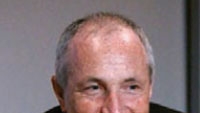Coverage of FIFA 2010

Broadcast Engineering recently talked to Francis Tellier, the CEO of Host Broadcast Services (HBS), the host broadcaster for the 2010 FIFA World Cup. HBS is responsible for the production, broadcast venue operations and the provision of the International Broadcast Center (IBC).
Broadcast Engineering: Which is more difficult: supporting the latest technology, like stereo 3-D, or providing affordable coverage to less developed nations?
Francis Tellier: It's not which is more difficult, because we have to do both. We must provide state-of-the art coverage for the most advanced broadcasters and new media [operators], but there are other less-developed countries that cannot afford to attend the IBC, and simply take the world feed by satellite. The world feed is a turnkey editorial package that starts one hour before the match and runs 30 minutes beyond the final whistle. At the same time, we have the high-profile coverage. For [this] we put all the material on a giant media server, and they just take what they want. We produce edited features, but the Brazilians or French — for example — can re-edit the footage if they want.
Broadcast Engineering: At each tournament, you add new technology. Over the years, what has represented the greatest leap forward?
Francis Tellier: The biggest challenge in 2002 was to deliver the coverage from two host countries, Korea and Japan. For 2006 [in Germany], the move to HD for such a big event was also a challenge, but it was decided in 2003, so there were three years to plan. This year we wanted to do 3-D, but it is going to be an additional production, and it is not going to impact the main production. Perhaps this time 3-D will be remembered. It is much earlier for 3-D today than it was for HD in 2003. 3-D is still experimental, especially for sports.
Broadcast Engineering: Are there any special challenges for FIFA 2010?
Francis Tellier: For 2010, there are new challenges. They include a large country, with two hours flight between venues.
Get the TV Tech Newsletter
The professional video industry's #1 source for news, trends and product and tech information. Sign up below.
Another problem is that the country does not generate enough electricity for all its needs, so there is often load shedding, leading to outages. The broadcast facilities will all need local generators to ensure continuity. And accommodation is a challenge in the smaller cities.
All the technical facilities are going to be imported. For 2-D, there will be flyaways — one at each stadium. We will move the expensive equipment likes lenses and cameras between stadiums. Because each venue has a flyaway setup, there is a comfort in the security of transmission.
3-D is more complicated; we have to rent Anatov freighter aircraft to deliver two OB trucks to South Africa. There is a shortage of 3-D production facilities that are available in time for the tournament, so flying in trucks at the last minute was the only option for HBS.
Broadcast Engineering: How do you rate the complexity of covering the World Cup versus the Olympics?
Francis Tellier: Our difficulties are that we only know the qualifying countries the November before, so a lot of preparation has to be last-minute. The Olympics has years to prepare.
There are nine host cities with up to 1800km between the most distant, so the World Cup is all over one country, whereas [the] Olympics is mainly in one place.
Although the [Olympics] opening ceremony has a large audience, the exposure of the World Cup is much higher than the Olympics. There is pressure during each [football] match; for the Olympics, it is just the opening ceremony.
Broadcast Engineering: Where will we see the greatest innovation?
Francis Tellier: Leaving 3-D aside, I would say the workflow, which we do for just one month. That is, making available material on the FIFA media server, files to transfer and edited material for use by new media.
Some broadcasters have taken one year to get a large media server working. We don't have that time; it has to work the first time.
We have a long relationship [with EVS]; we brainstorm with them. We suggest new products, and they work with us to develop them.
Broadcast Engineering: What about mobile TV?
Francis Tellier: We have developed several new packages for mobile network operators (MNOs) for a “breakfast to bedtime” experience. It was decided by HBS and FIFA to outsource the delivery to MNOs to Ericcson.
Mobile users will be able to receive features and information throughout the day, which complements live TV. There will be team-oriented packages offering features on your favorite team. An ENG team will follow each of the 32 qualifying teams. This will be made available to the broadcasters and MNOs. Material collected at the base camps is returned to the IBC for post production and repurposing.
